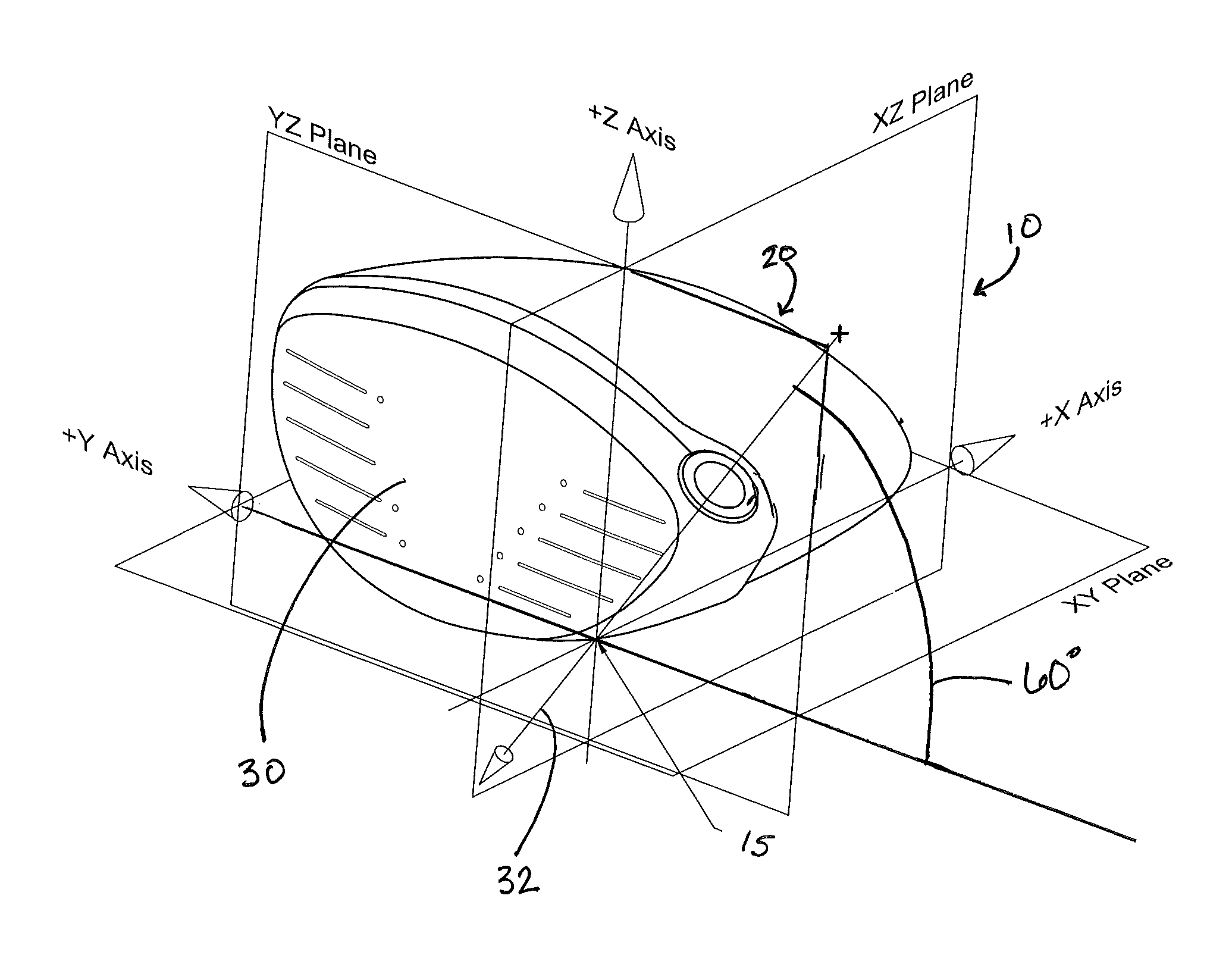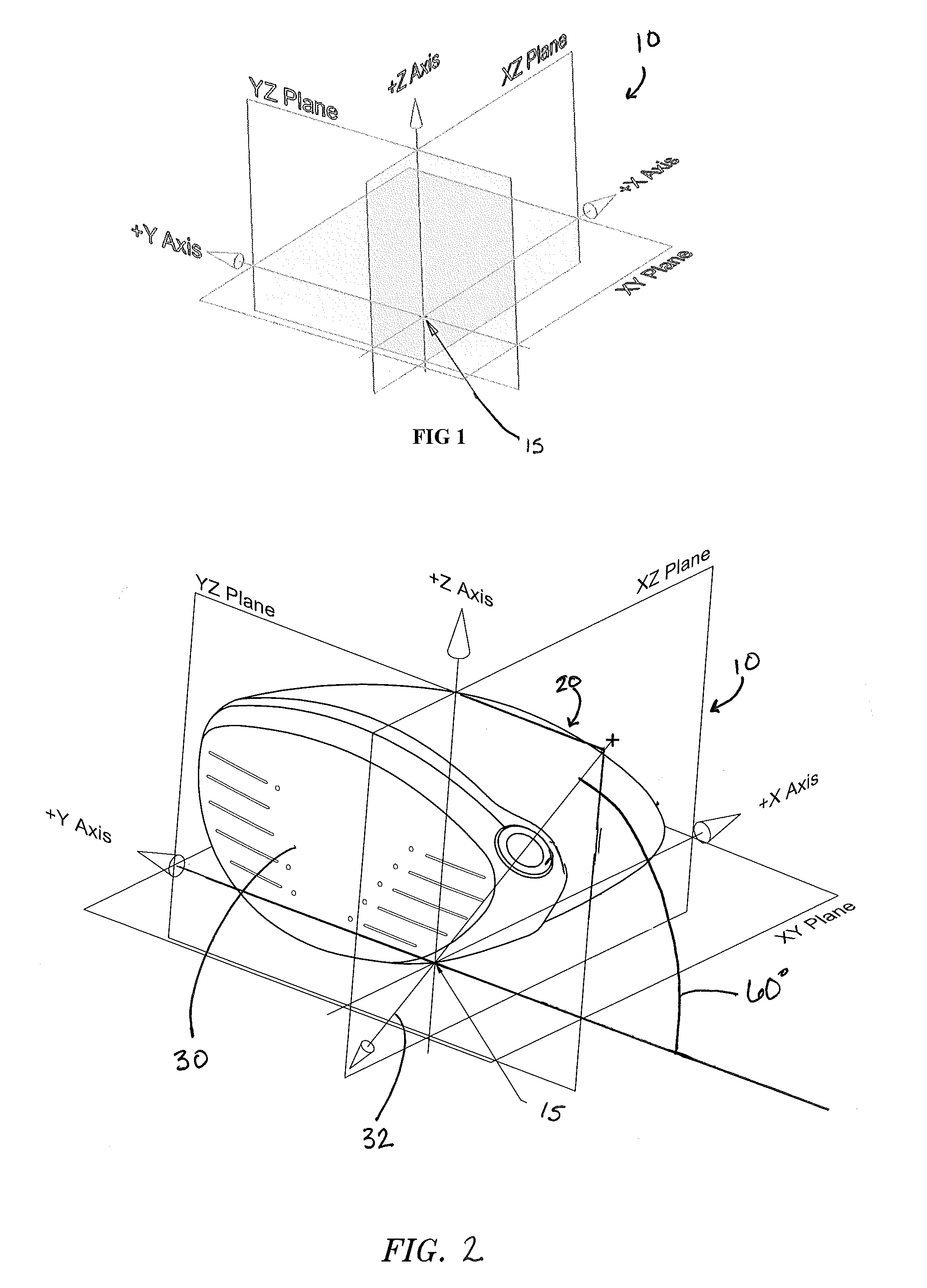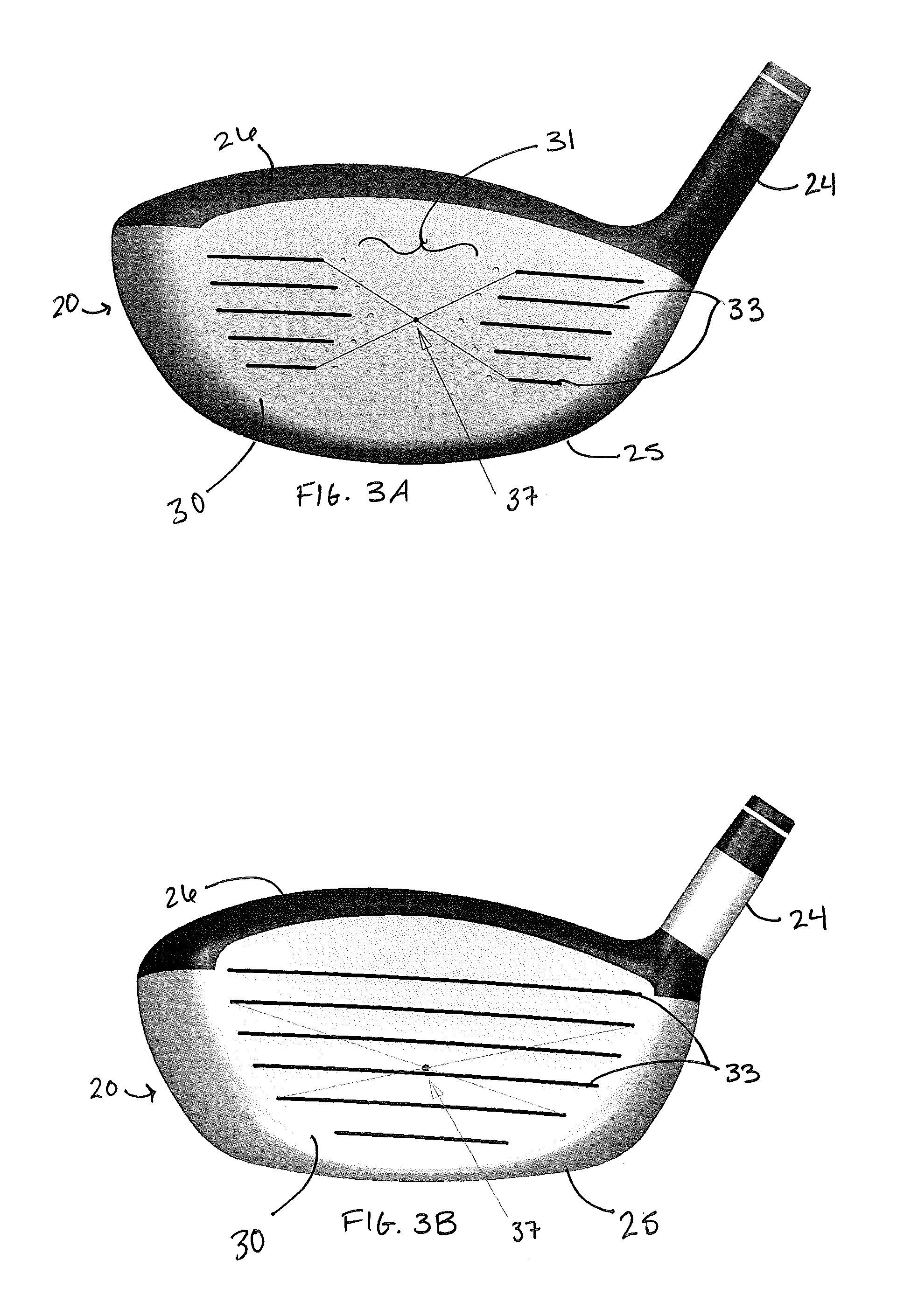Method of forming a golf club head with improved aerodynamic characteristics
a golf club and aerodynamic technology, applied in the field of golf club head forming, can solve the problems of limited volume, dimensions of the head, and limitations on design parameters, and achieve the effects of reducing drag forces, and improving the drag coefficient of the crown
- Summary
- Abstract
- Description
- Claims
- Application Information
AI Technical Summary
Benefits of technology
Problems solved by technology
Method used
Image
Examples
Embodiment Construction
[0031]The present invention relates to design relationships and methods of measurement to achieve an improved aspect ratio of a golf club driver head 20 and an improved golf club driver head 20 crown 26 surface design. The “Largest Tangent Circle Method” (LTCM) was developed to verify the existence of conforming and non-conforming geometries of driver club heads 20.
[0032]In a preferred embodiment of the present invention, the method for forming and / or measuring a driver type golf club head 20 comprises placing the club head 20 into a Cartesian Coordinate System (CCS) 10 comprising an X axis, a Y axis, and a Z axis, all of which intersect at an origin point. Three perpendicular planes, XY, YZ and XZ, exist within the CCS and also intersect at the origin point 15, as shown in FIG. 1. The resulting lines of intersection of the three planes with each other are perpendicular lines representing the CCS, with each line or axis being labeled appropriately X, Y, and Z and passing through the...
PUM
| Property | Measurement | Unit |
|---|---|---|
| angle | aaaaa | aaaaa |
| length | aaaaa | aaaaa |
| height | aaaaa | aaaaa |
Abstract
Description
Claims
Application Information
 Login to View More
Login to View More - R&D
- Intellectual Property
- Life Sciences
- Materials
- Tech Scout
- Unparalleled Data Quality
- Higher Quality Content
- 60% Fewer Hallucinations
Browse by: Latest US Patents, China's latest patents, Technical Efficacy Thesaurus, Application Domain, Technology Topic, Popular Technical Reports.
© 2025 PatSnap. All rights reserved.Legal|Privacy policy|Modern Slavery Act Transparency Statement|Sitemap|About US| Contact US: help@patsnap.com



